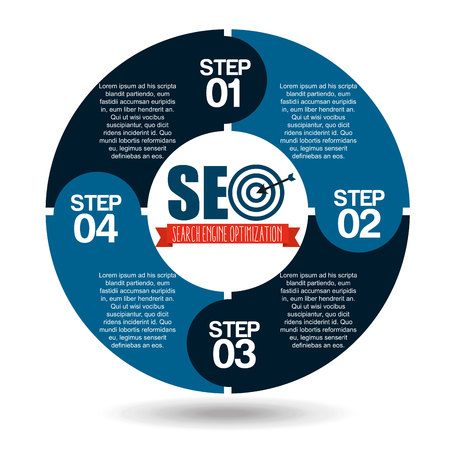Understanding the Role of Hreflang in International E-Commerce
For UK-based e-commerce businesses eyeing global expansion, grasping the significance of hreflang tags is a must. Hreflang is an HTML attribute that signals to search engines which language and regional version of a webpage should be served to users based on their location and language preferences. With the UK’s diverse population and proximity to Europe, British online retailers often attract customers from multiple countries who speak different languages or use unique local dialects.
Implementing hreflang ensures that Google and other search engines display the most appropriate version of your site to each visitor, thus enhancing user experience and reducing bounce rates. For instance, if you run a fashion store in London, having hreflang set up correctly means French shoppers see your French-translated content with prices in euros, while German visitors land on a German-language page with relevant shipping information. This localisation can directly impact conversion rates and customer loyalty.
Here’s a quick overview of why hreflang is crucial for British e-commerce brands:
Benefit |
Description |
|---|---|
| Improved Search Visibility | Your products appear in the right language and region-specific search results, helping you reach more relevant audiences globally. |
| Enhanced User Experience | Shoppers are served content in their preferred language and currency, making them more likely to engage and purchase. |
| Avoiding Duplicate Content Issues | Search engines understand which version of a page to index, so your site isn’t penalised for duplicate content across regions. |
| Competitive Edge | Proper localisation using hreflang can distinguish your brand from competitors who overlook this technical detail. |
In summary, by leveraging hreflang, UK e-commerce businesses can effectively connect with international customers, ensuring that every shopper lands on a site that feels tailored to their needs—no matter where they’re browsing from.
2. Identifying Common Hreflang Challenges for UK Retailers
For British e-commerce businesses looking to expand their reach globally, implementing hreflang tags can be a complex undertaking. UK online retailers often encounter a unique set of challenges that stem from the country’s cultural and linguistic diversity as well as its strong international trade ties. Understanding these hurdles is essential for creating a seamless cross-border shopping experience and improving organic search visibility in multiple markets.
Language Variations: Beyond Just English
While English is the primary language, UK e-commerce sites must consider variations such as British English (en-GB) versus American English (en-US). Moreover, many retailers also cater to multilingual audiences, including Welsh, Scottish Gaelic, and increasingly, European languages due to tourism and immigration. Failing to distinguish between these can result in delivering the wrong version of content to users and poor search engine rankings.
Regional Targeting: Navigating Local Nuances
Another major challenge is effectively targeting specific regions within and outside the UK. For instance, a retailer may want to serve different offers or product catalogues to customers in England, Scotland, Wales, and Northern Ireland. On an international scale, differentiating between markets like Ireland (en-IE), Australia (en-AU), or even Canada (en-CA) requires precise hreflang implementation to avoid cannibalising search results or confusing shoppers.
Managing Multiple Storefronts: Organisational Complexity
Many UK-based e-commerce businesses operate several storefronts under one brand—each tailored for different countries or regions. This multiplies the complexity of managing hreflang tags across domains, subdomains, or subdirectories. Below is a summary table outlining the most common hurdles faced by UK retailers:
| Challenge | Description | Example for UK Retailers |
|---|---|---|
| Language Variations | Differentiating between English dialects and other local languages | en-GB vs en-US; offering Welsh translations on select pages |
| Regional Targeting | Serving market-specific content and offers based on location | Different promotions for England vs Scotland; unique catalogue for Ireland |
| Multiple Storefronts | Consistent hreflang management across domains/subdomains | www.brand.co.uk, www.brand.ie, www.brand.com/au/ with tailored content |
| Technical Implementation | Avoiding errors in syntax or structure that affect indexing | Mismatched hreflang annotations causing indexing issues in Google UK results |
| Resource Allocation | Time and budget required for ongoing maintenance and monitoring | Regular audits and updates needed as product ranges or site structure changes |
Tackling these common obstacles head-on is vital for any UK e-commerce business aiming to create a robust international presence and avoid costly SEO pitfalls.

3. Step-by-Step Guide to Implementing Hreflang for UK Platforms
Implementing hreflang tags can seem daunting, but UK e-commerce businesses can streamline the process by following practical steps tailored for local content management systems (CMS) and workflows. Here’s a straightforward guide specifically for British retailers aiming for global expansion:
Step 1: Audit Your Site Structure
Begin by identifying which pages require hreflang tags. Typically, these are your core landing pages, product categories, and any content that is duplicated or closely mirrored in multiple languages or regions.
Common UK E-Commerce CMS Platforms
| Platform | Hreflang Support | Recommended Approach |
|---|---|---|
| Shopify UK | App-based or manual | Use apps like “Langify” or manually edit theme.liquid files |
| WooCommerce (WordPress) | Plugin-based | Install plugins such as “Polylang” or “WPML” |
| Magento UK | Built-in/Extension | Edit templates or use extensions like “MageWorx SEO Suite” |
| BigCommerce UK | Manual/Third-party app | Add code snippets to theme files or use dedicated apps |
Step 2: Choose Your Implementation Method
You can implement hreflang tags via HTML link elements in the <head> section, HTTP headers, or an XML sitemap. For most UK e-commerce sites, editing the HTML or using a plugin/app is the simplest route.
Example of Hreflang Tag in HTML:
<link rel="alternate" href="https://www.yoursite.co.uk/" hreflang="en-gb" /><link rel="alternate" href="https://www.yoursite.fr/" hreflang="fr-fr" /><link rel="alternate" href="https://www.yoursite.com/" hreflang="x-default" />
Tip:
If you’re targeting both English-speaking markets and specific regions (e.g., en-gb for the UK, en-us for the US), ensure each variation has its own unique URL and corresponding hreflang tag.
Step 3: Generate and Validate Your Tags
If using a plugin, most will auto-generate hreflang tags based on your language settings. If doing it manually, create a spreadsheet mapping each page to its regional/language version before adding tags. Use Google Search Console’s International Targeting tool to spot errors.
Step 4: Ongoing Maintenance and Testing
Review your hreflang implementation after adding new products, launching regional promotions, or updating your site structure. Schedule quarterly checks to keep everything aligned, ensuring visitors land on the correct regional page.
Summary Table: Key Actions per Platform
| Action | Shopify UK | WooCommerce | Magento UK |
|---|---|---|---|
| Add/Update Tags | Edit theme/app settings | Edit plugin settings/pages | Edit template files/extensions |
| Validate Implementation | Google Search Console/App reports | Google Search Console/Plugin reports | MageWorx/Google Search Console |
| Schedule Reviews | Quarterly with dev team/app audit tools | Quarterly with plugin audits/manual check-ups | Quarterly with extension audits/manual review |
This clear approach ensures British e-commerce businesses maintain optimal international SEO hygiene while expanding into new markets.
4. Best Practices for Multilingual and Multi-Regional Targeting
For UK e-commerce businesses looking to expand globally, properly implementing hreflang is essential to ensure users in different regions see the most relevant version of your site. This is especially important when dealing with English variants (UK, US, AU), Welsh, and other languages that are meaningful for British brands. Here are some actionable best practices tailored for UK businesses:
Handle English Variants Strategically
English is spoken worldwide, but regional differences matter. For example, spelling and terminology differ between the UK, US, and Australia. Use hreflang tags to serve the right content to each audience:
| Region | Language Code | Example |
|---|---|---|
| United Kingdom | en-gb | “Colour” instead of “Color”; “Trainers” instead of “Sneakers” |
| United States | en-us | “Color”, “Sneakers” |
| Australia | en-au | “Organise” instead of “Organize”; local slang like “thongs” (flip-flops) |
Tip: Always match your product descriptions, FAQs, and checkout process language to each variant for a seamless user experience.
Cater to Welsh Speakers and Other Local Languages
If your business operates in Wales or targets Welsh speakers, it’s good practice—and sometimes a legal requirement—to provide content in Welsh. Similarly, consider other relevant languages if expanding to areas with significant non-English-speaking populations.
| Language/Region | Language Code | Notes |
|---|---|---|
| Welsh (Wales) | cy-gb | Bilingual sites are appreciated; use clear toggle options. |
| Ireland (Irish) | ga-ie | If serving Irish audiences, consider Irish language support. |
| Mainland Europe (French/German/Spanish etc.) | fr-fr, de-de, es-es etc. | Add as required for market expansion. |
Implementing Hreflang Tags Effectively
- Avoid Duplicate Content: Each regional or language page should have unique content tailored to its audience.
- Create a Hreflang Sitemap: For large catalogues, manage hreflang via XML sitemaps for easier scalability and maintenance.
- Add Self-Referencing Tags: Every page must include a self-referencing hreflang tag along with alternates.
- X-Default Attribute: Use
x-defaultfor generic versions where no specific region/language fits the user. - Tidy Up Redirects: Ensure redirects respect users’ language/region preferences without causing loops or confusion.
The Localisation Checklist for UK Businesses Expanding Abroad:
- Create content adapted for each target market’s language variant or local dialect.
- Add accurate hreflang tags across all versions—don’t forget mobile URLs if you use separate mobile sites!
- User test your site from multiple locations using VPN tools to check which version displays in search engines.
5. Testing, Monitoring, and Troubleshooting Hreflang for UK Brands
Ensuring your hreflang implementation works seamlessly is vital for UK e-commerce businesses aiming for successful global expansion. Even small errors can cause search engines to misinterpret your intentions, potentially leading to the wrong language or regional version ranking in crucial markets. Here’s how British brands can reliably test, monitor, and troubleshoot hreflang with tools and strategies tailored for the UK market.
Reliable Tools for UK-Focused Hreflang Testing
Several tools are widely used across the UK e-commerce sector to verify hreflang tags:
| Tool | Description | UK-Specific Advantage |
|---|---|---|
| Screaming Frog SEO Spider | Crawls websites to identify hreflang tag issues and misconfigurations. | Developed in the UK; supports .co.uk domains natively and integrates with local servers. |
| Sitebulb | Visualises hreflang implementation with clear reporting on errors and missing attributes. | UK-based support; customisable for British English variations (en-gb). |
| Ahrefs & SEMrush | Monitor international SEO performance and flag hreflang issues over time. | Extensive database of UK-specific keywords and rankings. |
| Google Search Console | Flags indexing errors and provides country targeting insights. | Allows geo-targeting settings for .uk ccTLDs. |
Strategies for Effective Hreflang Verification & Optimisation
- Regular Crawling: Schedule monthly crawls using Screaming Frog or Sitebulb to catch new or recurring issues as your site evolves, especially after adding new products or countries.
- Manual Spot Checks: Periodically check key product pages in Google’s Rich Results Test tool to confirm correct hreflang signals for both en-gb and other targeted languages/regions.
- Error Log Reviews: Monitor Google Search Console’s International Targeting report for flagged inconsistencies or missing return tags. Prioritise fixing these before major trading periods like Black Friday or Christmas sales.
- Competitor Benchmarking: Use Ahrefs to compare your hreflang set-up against leading UK competitors—spotting gaps where you may miss out on international traffic.
- A/B Testing: For large catalogues, run controlled tests by implementing updated hreflang tags on select categories first, measuring impact on impressions and click-through rates in different regions via Google Analytics.
Troubleshooting Common Hreflang Issues for UK Brands
If you spot persistent problems such as incorrect country/language versions ranking or duplicate content warnings, consider these UK-specific troubleshooting steps:
- .co.uk vs. .com Domains: Ensure that each domain or subfolder has self-referencing hreflang tags and correctly points back to all alternates, including the primary en-gb version for the UK audience.
- Bespoke Content Variations: Double-check pages with subtle spelling differences (e.g., “favourite” vs. “favorite”) to guarantee they’re mapped appropriately through hreflang.
- Bilingual Regions: For areas like Wales or Scotland with unique language needs (e.g., Welsh), use x-default tags alongside specific language codes to guide users effectively.
- Canonical Conflicts: Avoid conflicting canonical URLs that override hreflang intent—always align canonical and hreflang tags within each page variant.
Continuous Improvement for Sustainable Growth
The global e-commerce landscape is dynamic, so ongoing optimisation is crucial. Set quarterly reviews to reassess your international targeting strategy as you expand into new territories or update your product range. By leveraging trusted UK-centric tools and maintaining a proactive approach to error detection and resolution, British e-commerce businesses can secure consistent international visibility—driving sustainable growth well beyond the home market.
6. Real-World Success Stories from UK E-Commerce Exporters
When it comes to mastering Hreflang for global expansion, several British e-commerce brands have set shining examples by leveraging this technical SEO tool to reach and resonate with international customers. These success stories illustrate how a well-executed Hreflang strategy can drive online visibility, improve user experience, and increase conversions across multiple markets.
Case Study 1: ASOS – Tailoring Content for Multilingual Audiences
ASOS, the renowned UK-based fashion retailer, operates in over 200 markets. By implementing Hreflang tags on their website, ASOS ensures that shoppers in France see French-language content, while German visitors are served pages tailored for Germany. This targeted approach has minimised bounce rates and boosted sales in non-English speaking regions.
Key Results for ASOS
| Market | Bounce Rate Reduction | Conversion Uplift |
|---|---|---|
| France | -18% | +12% |
| Germany | -21% | +15% |
Case Study 2: Made.com – Seamless Shopping Across Europe
Made.com, a British furniture e-tailer, expanded into several European countries. By deploying Hreflang tags alongside localised content and currency options, Made.com managed to provide a seamless shopping experience for users in Spain, Italy, and the Netherlands. As a result, they saw an uptick in organic traffic and a reduction in customer service queries related to language confusion.
Key Results for Made.com
| Country | Organic Traffic Growth | Customer Service Queries (Language) |
|---|---|---|
| Spain | +24% | -30% |
| Italy | +29% | -27% |
Case Study 3: The Body Shop – Enhancing Local Relevance
The Body Shop capitalised on Hreflang implementation to ensure that their ethical beauty products reached audiences in their preferred language and cultural context. They synchronised local promotions and product launches with localised landing pages—helping them boost engagement and brand loyalty among international consumers.
Takeaways for UK E-Commerce Brands
- Precise Hreflang implementation helps prevent duplicate content issues and ensures correct geo-targeting.
- Combining Hreflang with broader localisation strategies amplifies customer trust and relevance.
- The use of data-driven insights allows continuous refinement of international SEO tactics.
The achievements of these leading British brands underline the value of integrating Hreflang into your global expansion roadmap. With careful planning and ongoing optimisation, UK e-commerce businesses can significantly widen their international reach while delivering a tailored experience that drives results.


